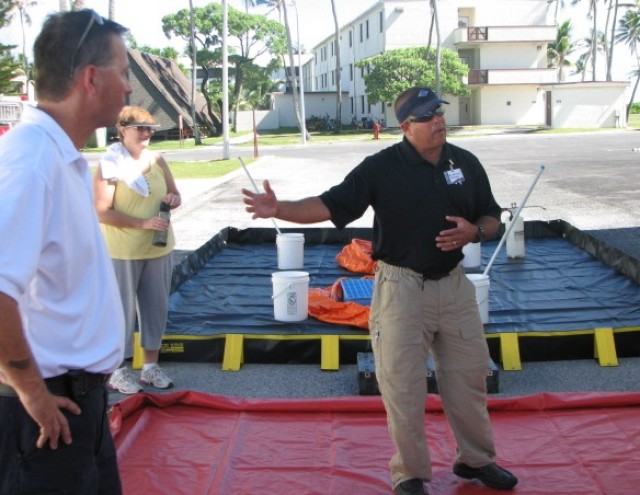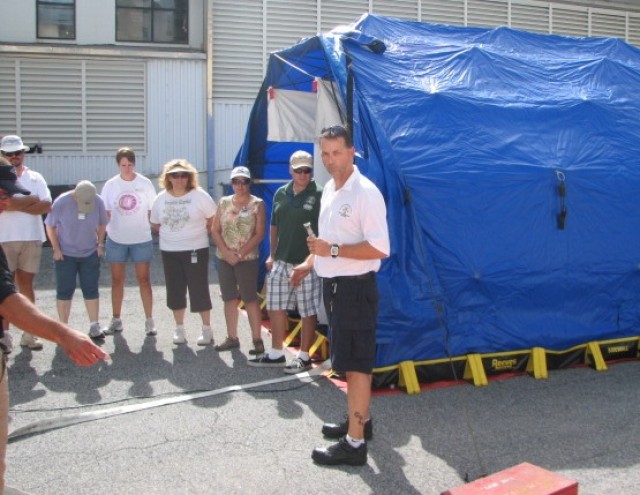Two members from the Joint Task Force - Homeland Defense division visited Kwajalein, Marshall Islands, Aug. 19-21 for a Subject Matter Expert Exchange (SMEE) concerning hazardous material decontamination.
Mike Machado and Master Sgt. Paul Price from JTF-HD teamed up with personnel from the Kwajalein Fire Department, hospital and dental facility to review the island's current hazmat decontamination plan. They conducted a field training exercise to give personnel from those departments a chance to utilize the decontamination system.
Members of the fire department set up the decontamination system on Aug. 20 in the parking lot of the hospital. John Finley, Fire Department assistant chief of training, and Machado, gave the group a tour through the system.
After the group was shown how to set up and operate the large system, they did a practice run, according to Machado. Some helped set up the tent while others got the generator and decontamination solution set up. They practiced decontaminating patients, using people from the community who had volunteered for the exercise.
Decontamination consists of the removal of hazardous substances from employees and equipment to the extent necessary to preclude the occurrence of foreseeable adverse health effects, according to the Occupational Safety and Health Administration.
Machado described basic decontamination awareness, capabilities of the decontamination system, discussed operational procedures and techniques, and took a look at different decontamination systems that are used in other areas similar to Kwajalein.
He explained that "hot zones" are the contaminated areas in which an incident occurred. In these areas, all staff must be in personal protective equipment like the Level A suit.
The "warm zone" is the monitoring area in between where decontamination takes place and medical attention is given.
The "cold zone" is the clean area and only patients who have been thoroughly decontaminated are allowed to seek medical attention.
The most likely instances of decontamination on Kwajalein would probably involve chlorine, diesel fuel or hydraulic fluid. Regardless of the substance, personnel were trained on how to handle any sort of potential hazmat-related occurrence, Machado said.
Machado emphasized that training is key and emphasized that training to handle situations involving hazardous materials requires knowledge. That knowledge, he said, comes from hands-on experience. The hospital, dental and fire department staffs now have the information and experience necessary to handle a hazmat decontamination situation if one were to arise on Kwajalein.




Social Sharing